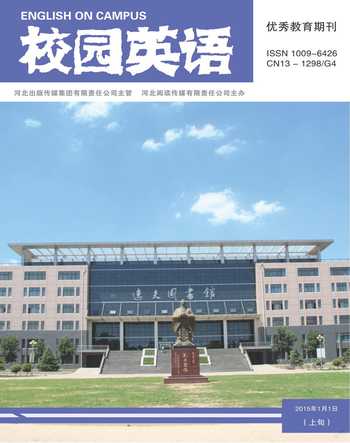Evaluation about“reading,writing,and assistive technology: an integrated developmental curriculum for college students”
吴红飞
【Abstract】We firstly introduces the content and idea of Ellens essay, gathering according materials searching on internet, then make concerning critical evaluation.
【Key words】Assistive technology; content; merits; disadvantages
1.Main content
Firstly, Ellen Urquhart Engstrom introduced reading and writing situation of students in America, pointing out existing problems.Then, he comes up with the merits of assistive technology, supporting the combination of sound instructional strategies with assistive technology helped students make gains beyond what they had achieved previously.Lastly, he proves the efficiency of the integrating lessons by two real cases studies—Mark and Bob in Landmark universities.
2.Basic concept、significance and problems under comparison
From perspective of basic concept, in 1808, Pellegrino Turri of Italy built the first typewriter for his blind friend to help her write legibly.To date, assistive technology makes it possible for a person to access computer technology who would be severely limited.In the essay, from assistive technology application, Ellen focuses on the impact of assistive technology on students cognition education.Actually, the function of assistive technology involves various fields, physical disability and cognitive limitations.Other essays also explain the application of assistive technology in special education: Gerber (1994) discussed about older people, physical disabled individuals, and normal students.Many other scholars also proved the efficiency of assistive technology in classroom.Peterson-Karlan (2008) has concluded three usage of assistive technology for learning : (a) Plan and organize t (b) Draft and transcribe (c) Edit and revise.Bedford and laurie (2005) express assistive technology supporting role for disabled adults.Of course, other scholars also raises different ideas.For example, Ravneberg (2012) and Phillips (1993) come up abandonment of assistive technology problems.It reminds us if Ellen also attempt to dig some problems of assistive technology, the essay will be more valuable.In following evaluation, we will discuss some problems.
3.Merits and Disadvantages
There are a few creative points in this essay.For new software, Ellens article advocates new technology originally used for people who have physical disabilities to students who have cognitive disabilities.For socially emotion, the author reveals we need to create fair environment and more opportunities for cognitive disabled person.
However, there are also weaknesses.Firstly, three of eight students taking part in the courses left school early, it suggests assistive technology cant solve the problems about motivation.Hence, we should note this disadvantage of assistive technology, mechanically not perfectly.In the process of proving the efficiency of assistive technology in integrating classes, the author only uses the narrative essay “Dyslexic CEO” as analytic case, it is not persuasive enough, because some other types of essays should also be presented properly.In addition, Ellen affirms assistive technology the role of scaffold for students who have cognitive disabilities in writing and reading.But, scaffold doesnt mean independence.When students reached good level after the software presents the structure of the paragraphs for readers, the software itself should gradually simplify the structure of the essay and let students have ability to learn independently finally rather than merely depend on assistive technology all the time.Marks and Montgomery (2006) also express the necessity of cultivating the independence in applying assitive technology into the writing course.In this sense, Ellen just proves the efficiency of the integrating courses based on assistive technology in simple way instead of in various respects, ignoring to dig something what we need to pay attention to.
References:
[1]Bedford & laurie.(2005).A multiple case study of the role of assistive technology in the ducation of adults with disabilities.Wyoming: University of Wyoming Press.
[2]Gerber, P.J.(1994).Researching adults with learning disabilities from an adult-development perspective.Journal of Learning Disabilities, 27, 6-9.
[3]Montgomery, D.J.& Marks, L.J.(2006).Using technology to build independence in writing for students with disabilities.Preventing School Failure, 3, 33-38.
[4]Peterson, K.G.& Hourcade, J.& Parette, P.(2008).A review of assistive technology and writing skills for students with physical and educational disabilities.Physical Disabilities: Education and Related Services, 26, 13-32.
[5]Phillips, B.&Zhao, H.(1993).Redictors of assistive technology abandonment.Assistive Technology, 5, 36-45.
[6]Ravneberg, B.(2012).Usability and abandonment of assistive technology.Journal of Assistive Technologies, 6, 259-269.

